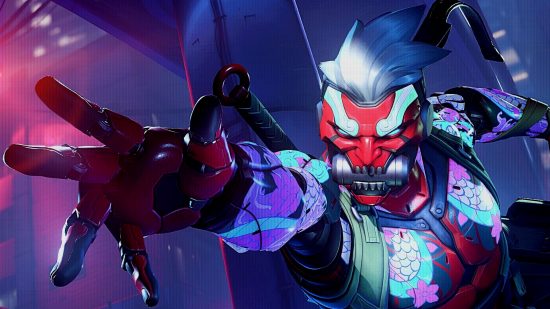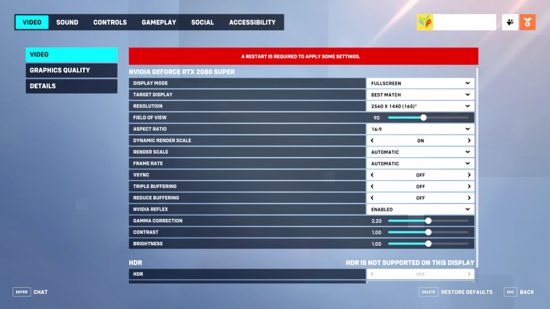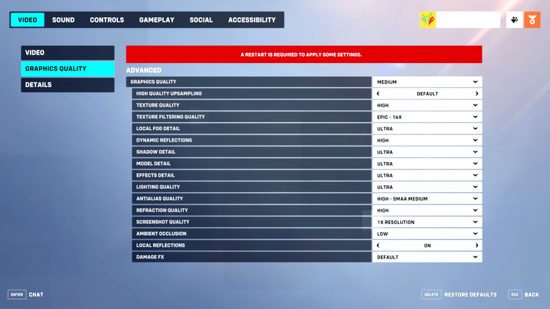Want the best Overwatch 2 settings? Making sure you have the optimal Overwatch 2 settings when you run Blizzard’s FPS game will help improve visual performance as well as your own. After all, the best way to make sure you see your opponent before they see you is with the right graphics settings and frame rate.
Overwatch 2 has more demanding requirements than its predecessor, so once you’ve ensured you have the right setup and best graphics card to handle the Overwatch 2 system requirements, set the free PC game up to give the very best performance – and make sure you never miss a shot.
Best Overwatch 2 video settings
- Display Mode: Fullscreen
- Target Display: Best Match
- Resolution: Choose the native resolution of your monitor, and the highest possible FPS
- Field of View: Personal preference – higher is usually better for your performance because you can see more at once, but it often results in a lower framerate, so find a balance
- Aspect ratio: Relative to your monitor (usually 16:9)
- Dynamic Render Scale: Off
- Render scale: Automatic
- Frame rate: 300 (this can be higher than your actual FPS for smoother performance)
- V-Sync: Off
- Triple buffering: Off
- Reduce buffering: On
- NVIDIA Reflex: Enabled + Boost
- Gamma Correction: 2
- Contrast: 1
- Brightness: 1
Of course, any of these can be tweaked if they don’t match your own preference, particularly gamma, contrast, and brightness.
Best Overwatch 2 advanced graphics settings
- Graphics quality: Default
- High quality upscaling: AMD FSR 1.0
- Image sharpening: Default
- Texture quality: Medium
- Texture filtering quality: 8x
- Local fog detail: Low
- Dynamic reflections: Low or off
- Shadow detail: Medium
- Model detail: Low
- Effects detail: Low
- Lighting quality: Medium
- Antialias quality: Low – FXAA or off
- Refraction quality: Low
- Screenshot quality: 1x resolution
- Ambient occlusion: Off
- Local reflections: On
- Damage FX: Default
These settings are even more amenable to personal preference, but the above is a good balance between sharpness and increased FPS, while lowering any details options can only aid your frame rate further. Equally, you can get away with increasing some of the options above if you’re working with a high-end graphics card.
Overwatch 2 gameplay settings
Beyond graphics settings, there are a few gameplay-facing settings that are worth adjusting as they’ll make it slightly easier to read the game or see targets.
In the Accessibility section, go to General and turn Camera Shake to reduced to make chaotic fights a bit less dizzying. Depending on how you’re finding target identification, you might also want to play around with the colour options for enemy UI in the Color Blind options screen – some stand out a lot more than the default red one.
Aim smoothing also appears to be affecting mouse and keyboard players, so head to the Controls section, then General and the Advanced section of sensitivity – set Aim Smoothing to zero.
We also suggest turning In World Waypoint Opacity and Respawn Icon Opacity to roughly 33% – this stops the waypoints from blocking your view, and is very helpful in modes like Push where the objective is often right in the middle of the team fight.
Now you are all set up for the most fast-paced Overwatch 2 combat, check out our guide on the best Overwatch 2 DPS heroes, the best support characters, and the best tanks, to level up your gameplay even more. We’ve also got an Overwatch 2 tier list to help you decide which character to play in the current meta.


